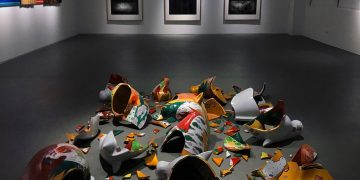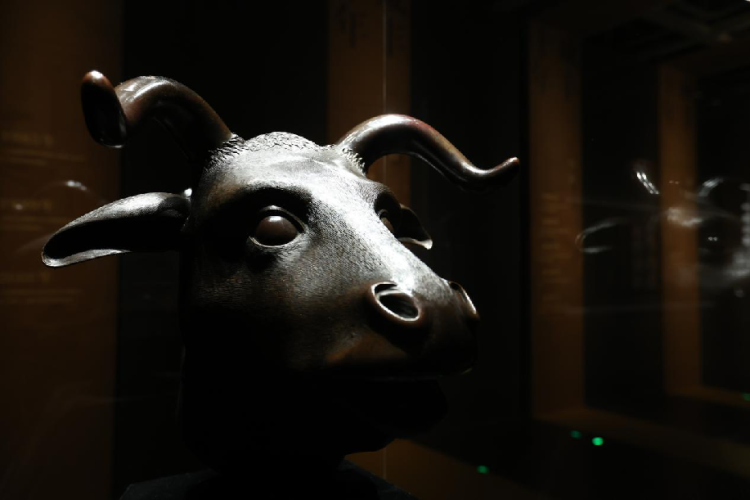On the auspicious date of September 26, 2022, Shanghai embraced a cultural milestone with the opening of “The Grand Return: A Special Exhibition of Overseas Repatriated Cultural Relics.” This extraordinary event showcased over 40 exquisite artifacts that have traveled the globe before finding their way back to the embrace of their native soil, among them the original bronze heads of the Ox, Tiger, Monkey, and Pig from the iconic Sea-Yen Hall Zodiac Fountain of the Old Summer Palace in the Qing Dynasty, alongside an array of national treasures in the form of bronze masterpieces from the Shang, Zhou, and Han dynasties.
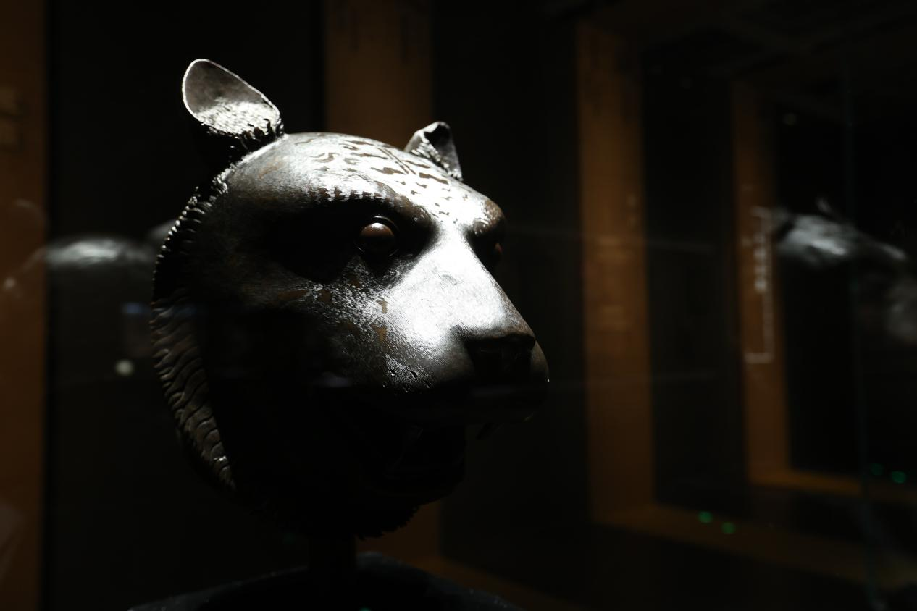
The spotlight of the exhibition was undoubtedly cast upon the four exquisitely crafted zodiac animal heads, which stood as testaments to the unparalleled skill and artistic prowess of the imperial court artisans. Crafted using the finest copper reserved exclusively for imperial use, these heads exuded a rich, somber hue, indicative of the meticulousness and extravagance that characterized their creation. Each detail, down to the finest hairs on the animals’ coats, was meticulously sculpted and forged, resulting in a level of realism that bordered on the uncanny. The Ox head exuded strength and vitality, its muscular contours etched with precision; the Tiger head, with its enigmatic blend of feline and leonine features, seemed to roar silently; the Monkey head, with its peach-shaped face, beamed with mischievous charm; while the Pig head, reminiscent of a wild boar, captured the essence of traditional Chinese aesthetics with its rugged yet endearing form.
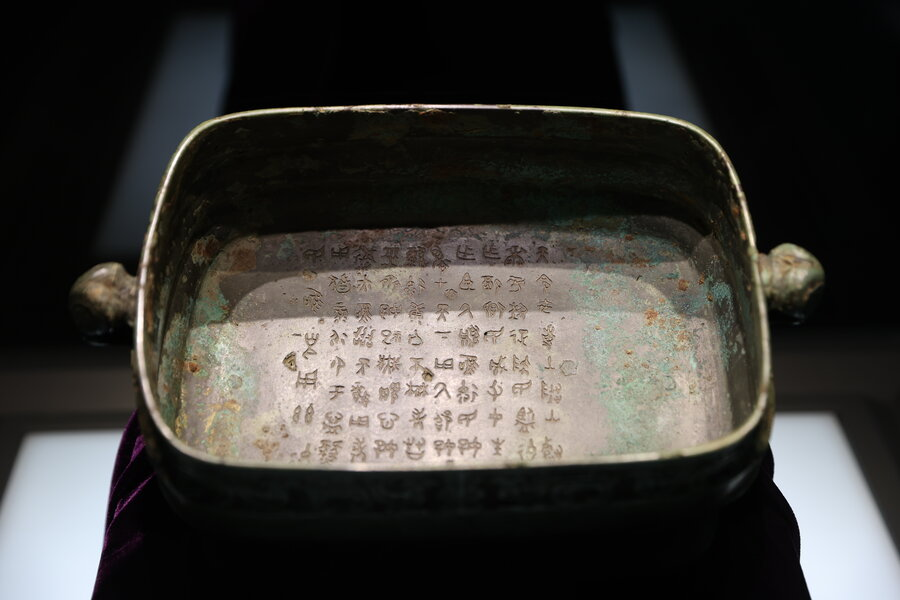
Yet, the exhibition’s treasures extended far beyond the iconic zodiac heads. Among the myriad of bronze heavyweights that graced the galleries was the “Suigong Xun,” a vessel dating back to the mid-Western Zhou Dynasty, approximately 2,900 years ago. This humble-looking vessel, resembling a modern-day lunchbox, concealed within its depths a historical gem: an inscription etched on its interior base, comprising 98 characters, hailed as the “Ultimate Inscription of the Western and Eastern Zhou Dynasties.” This precious text narrates the legendary tale of “Yu the Great’s Control of Floods” and the philosophy of “ruling with virtue,” marking it as the earliest known documentary record in China that touches upon both Yu’s heroic deeds and the ethical foundations of governance. Its existence underscores the profound historical and cultural significance of the artifact, rendering it invaluable not just as a material object but as a living link to ancient wisdom and moral teachings.
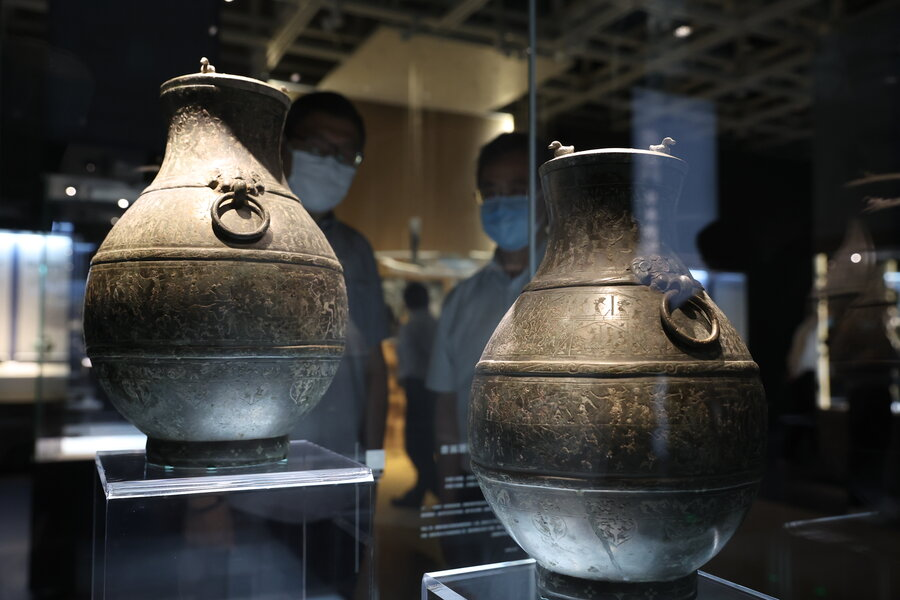
“The Grand Return” exhibition served as a poignant reminder of the enduring resilience and cultural continuity of the Chinese nation. It was a celebration of the triumphs of diplomacy, international cooperation, and the tireless efforts of individuals and institutions dedicated to preserving and repatriating cultural heritage scattered across the globe. Each artifact on display whispered tales of resilience, loss, and ultimately, rediscovery, inspiring a profound sense of pride and reverence among visitors.
As the exhibition unfolds its narrative across the galleries, it invites audiences to embark on a journey through time, traversing eras and encountering the rich tapestry of China’s ancient civilizations. The intricate patterns etched on the bronzes, the stories etched in their inscriptions, and the very existence of these treasures amidst the tumultuous tides of history serve as a testament to the indomitable spirit of human creativity and the unbreakable bonds that tie us to our past.
Moreover, the exhibition underscores the importance of international cooperation in the protection and preservation of cultural heritage. It highlights the shared responsibility of the global community to safeguard these irreplaceable treasures, which are not just the property of one nation but humanity’s collective inheritance.
As “The Grand Return” exhibition continues its run until December, it offers a rare opportunity for the world to witness the grandeur and beauty of China’s ancient civilizations, fostering cross-cultural understanding and appreciation. It is a momentous occasion that underscores the enduring power of art and culture to bridge divides, inspire dialogue, and foster a sense of shared humanity.



























